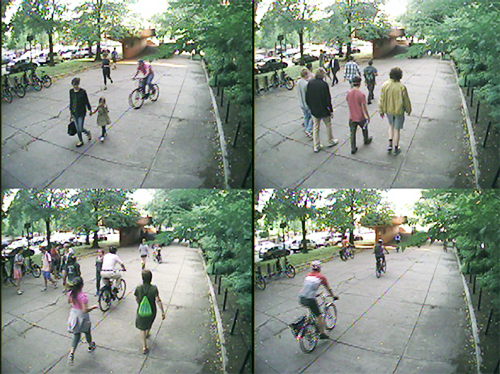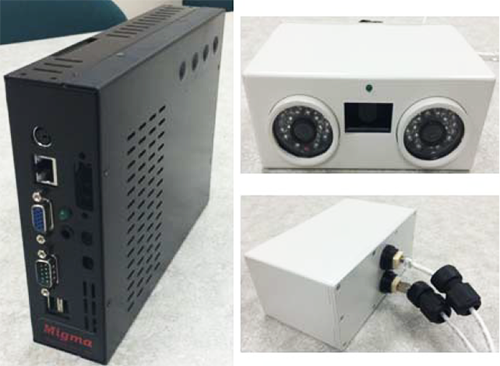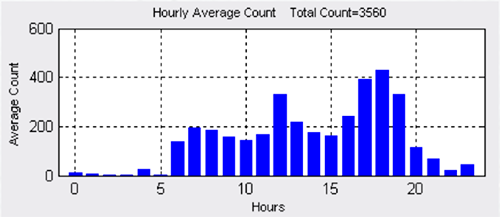Understanding Traffic Systems with Innovative Pedestrian and Cyclist Detection

The U.S. Department of Transportation's (U.S. DOT) highly competitive Small Business Innovation Research (SBIR) program awards contracts to American small businesses to develop and deploy innovative, effective, efficient solutions to our nation’s transportation challenges. Small businesses that participate in U.S. DOT’s SBIR program have developed numerous technologies that have benefitted the Department and the public.
With support from the SBIR program, Migma Systems, Inc. innovated a pedestrian detection and counting technology to provide urban planners, designers, and transportation agencies a better understanding of their traffic systems.

MigmaPedCount is designed to meet the traffic engineering requirements for pedestrian detection and counting in the outdoor environment. (Migma Systems, Inc. photo)
The Technology
The technology, MigmaCount, uses a combination of a high resolution infrared light-emitting diode (IR LED) camera and a laser scanner to separate and count pedestrians and cyclists traveling individually and in groups. MigmaCount can tally small or large numbers of pedestrians and cyclists heading in two directions simultaneously with over 95 percent accuracy.
This unique sensor can separate pedestrians and cyclists traveling in groups, which cannot be done with commonly used video camera technology.
“The most exciting part of our technology is the fusion of both stereo camera and laser scanner,” said Bo Ling, the project’s principle investigator and CEO of Migma Systems, Inc. “This innovative technology makes it possible to separate a large number of pedestrians walking closely, which has not been solved until now.”

Built-in IR LEDs are turned on under low illumination for nighttime operation. (Migma Systems, Inc. photo)
Accurate counts of pedestrians and cyclists at intersections are important for traffic system planning and design, as they can inform investments and improve performance in infrastructure that support and encourage mobility and accessibility.
Traditionally, pedestrians and cyclists are counted manually, which is both time-consuming and costly. Because of these concerns, many transportation agencies collect data for only a few peak hours.
An automated counting system for pedestrians and cyclists can provide real-time counts over a long period of time, including nights, weekends, and holidays, thus providing transportation agencies a better understanding of traffic systems.
In addition to counting pedestrians and cyclists, the technology also provides measures at various intervals (e.g., fifteen-minute segments), such as:
- Pedestrian and cyclist volume at different times
- Pedestrian and cyclist average traveling speed

The average hourly pedestrian count at an intersection, measured by MigmaCount Solar. (Migma Systems, Inc. image)
The Future
MigmaCount has entered the commercial stage of development, with final field evaluation at a busy intersection (over 1,000 pedestrians per hour). The technology has a number of specializations, such as MigmaPedCount and MigmaCount Solar, which refine the capabilities of the technology for different environments and needs.
Transportation agencies and private planning and design companies can now use these products for data collection needs. These technologies represent a cost effective and efficient solution using a computerized counting system to automatically collect data on pedestrians and cyclists over a relatively long period of time, rather than a few peak hours.
How SBIR Helps
The U.S. DOT SBIR award has benefited Migma Systems, Inc. by providing the support necessary for product development and testing.
“The business contacts provided by DOT project managers are extremely valuable,” said Ling. “Without SBIR, it is impossible to bring this exciting technology to the commercial world.”

